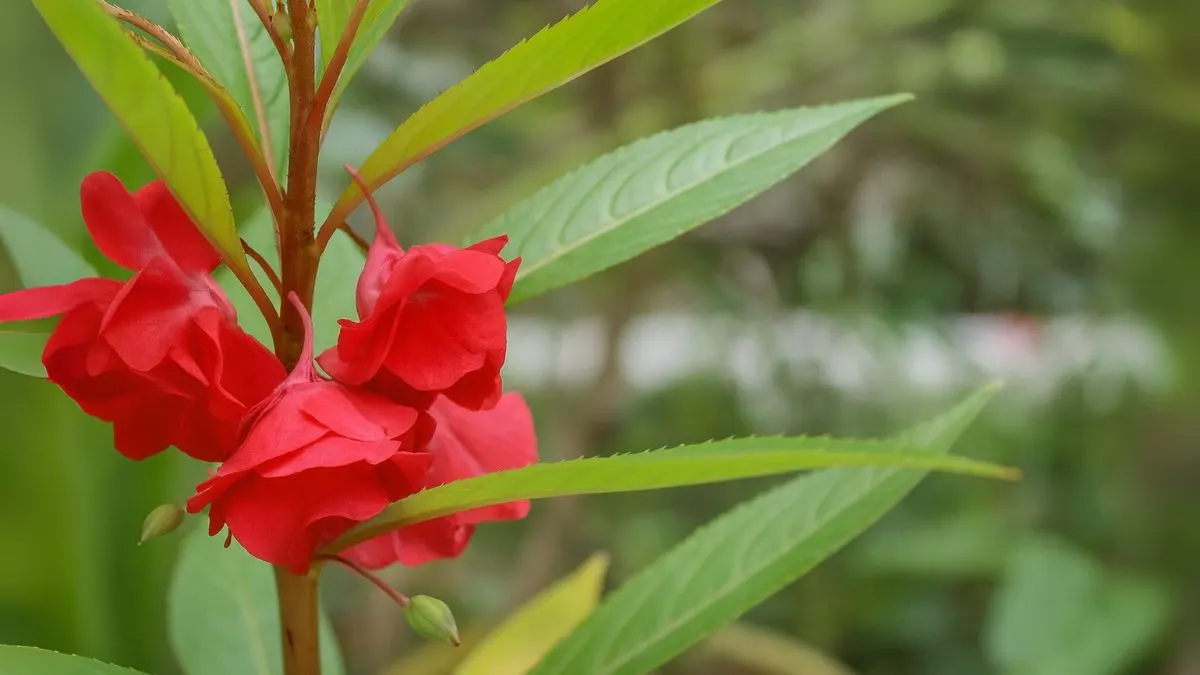Few flowers can match the old-world charm and simplicity of Balsam (Impatiens balsamina). Often referred to as the “garden balsam” or “touch-me-not” because of its exploding seed pods, this plant has been loved for centuries in cottage gardens. Its vibrant blooms, ease of care, and adaptability make it a favorite for both beginners and experienced gardeners.
When I first grew balsams in my backyard, I was surprised by how little effort they required. Unlike many fussy flowers, balsam can be grown as long as they have adequate amounts of sunlight and fertilizer, making them perfect for anyone looking to add quick color to their space.
Understanding the Growing Season

The first step in successfully cultivating balsam is timing.
- Balsam seeds can be planted when all danger of frost is passed. This usually means early spring in warmer regions or late spring in colder ones.
- Their growing season is summer and rainy season, making them ideal for climates with warm days and regular watering.
- In Canada or northern USA, it’s best to start seeds indoors before transplanting them outside once frost risks are over.
👉 Pro Tip: If you live in a region with long winters, sow seeds indoors 6–8 weeks before the last frost date to get a head start.
Choosing the Right Spot in Your Garden 🌞🌿
Location is everything when it comes to balsam.
- Balsam grows especially well in sunny sites that are out of the harsh afternoon sun. Direct sun in the morning works beautifully, while some afternoon shade prevents wilting.
- Alternatively, you can plant garden balsam in partial shade for the best blooms if you live in particularly hot regions.
- They prefer moist, well-draining soil but aren’t too picky about the soil type.
From my experience, the plants that received morning sunlight and afternoon protection produced the most vibrant, long-lasting flowers.
Also Read: Step-by-Step Guide to Caring for Your Christmas Cactus at Home
How to Plant Balsam Seeds 🌱
Planting balsam from seeds is simple and rewarding.
- Prepare the soil – Loosen it and enrich with compost.
- Sow seeds – Plant seeds and cover them with about 1/8 inches of soil. They are small and don’t need to be buried too deeply.
- Spacing – Leave about 12–18 inches between plants to allow airflow.
- Watering – Keep the soil moist until germination occurs, usually within 7–10 days.
👉 For containers, ensure the pots have good drainage. Balsam does not like standing water.
Care and Maintenance of Balsam 🌸
Growing balsam is straightforward once they are established.
- Sunlight: Both full sun (with protection from harsh afternoon rays) and partial shade work.
- Watering: Keep the soil consistently moist, but not waterlogged.
- Fertilizer: Since balsam can be grown as long as they have adequate amounts of sunlight and fertilizer, feed them with a balanced, water-soluble fertilizer every 2–3 weeks.
- Deadheading: Remove faded flowers to encourage continuous blooming.
With this simple routine, you’ll have blossoms from summer right through the rainy season.
Quick Growing Guide for Balsam
Aspect |
Requirement |
Sunlight |
Morning sun; partial shade in the afternoon |
Soil |
Moist, well-drained |
Sowing Depth |
1/8 inches of soil |
Spacing |
12–18 inches apart |
Growing Season |
Summer and rainy season |
Fertilizer |
Balanced feed every 2–3 weeks |
Benefits of Growing Balsam 🌺
- Fast Growth – You’ll see results within weeks.
- Non-Fussy Plant – Thrives even with minimal attention.
- Continuous Blooms – Flowers throughout the warm season.
- Attracts Pollinators – Bees and butterflies love balsam.
- Ornamental Value – Perfect for borders, containers, or as fillers in flower beds.
Also Read: Think Daylilies Are Real Lilies? Here’s the Shocking Truth
My Gardening Experience with Balsam 🌼
In my own garden, balsam quickly became a favorite. One summer, I sprinkled seeds in a partially shaded corner that received gentle morning light. Within two months, the area transformed into a colorful patch buzzing with bees. I didn’t have to do much besides watering and occasional fertilizing.
That’s when I realized why it is such a beloved choice for home gardeners worldwide. It gives maximum beauty with minimum effort.
Conclusion
If you’re new to gardening or simply want a low-maintenance flower that rewards you generously, balsam is the plant to grow.
- Remember, balsam seeds can be planted when all danger of frost is passed.
- Ensure they are placed in sunny sites that are out of the harsh afternoon sun, or provide partial shade for the best blooms.
- Just plant seeds and cover them with about 1/8 inches of soil, and give them fertilizer and water through their summer and rainy season growing cycle.
👉 Start small, try them in containers or garden beds, and you’ll soon see why balsam has been a classic choice for centuries.






